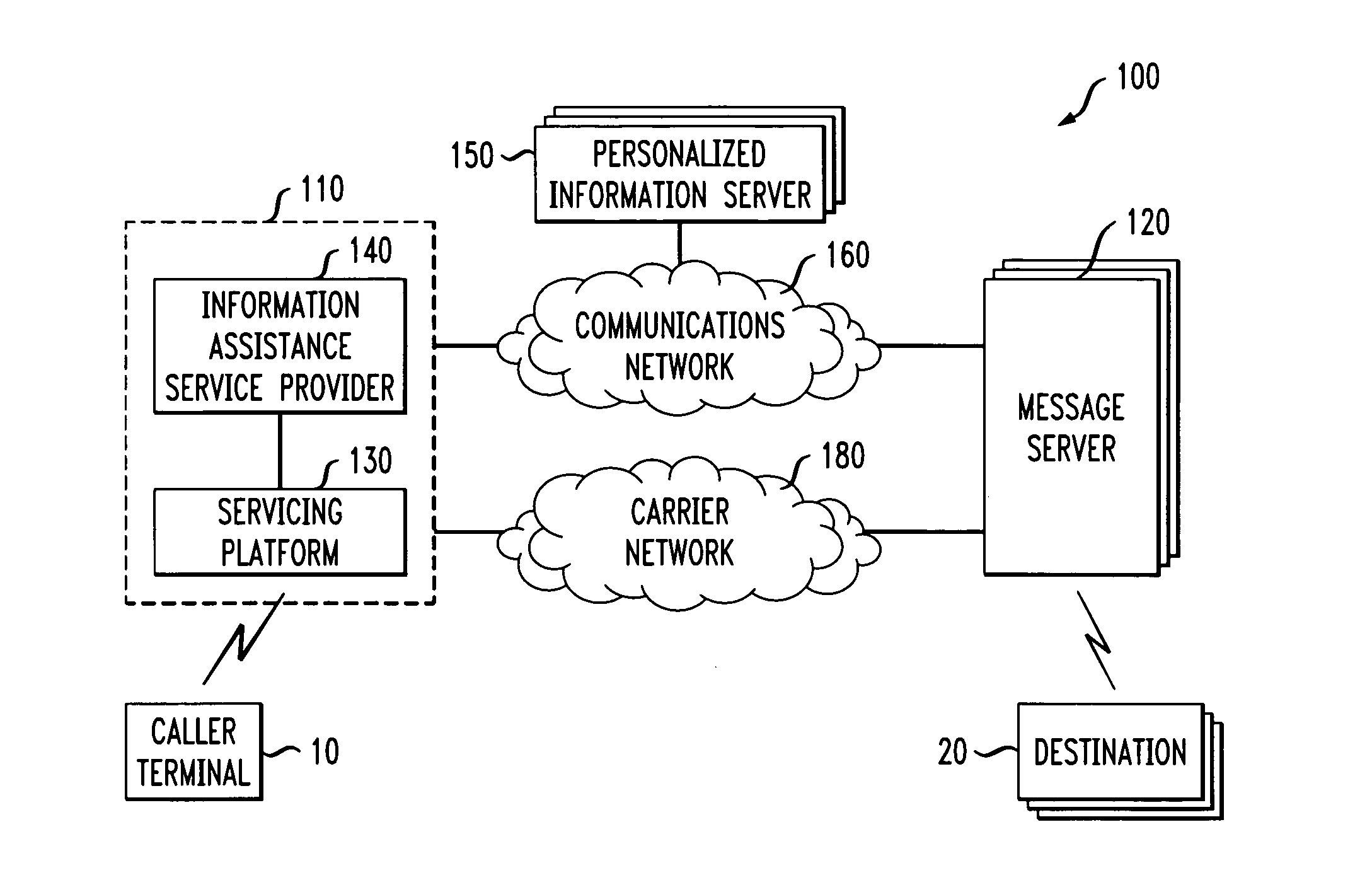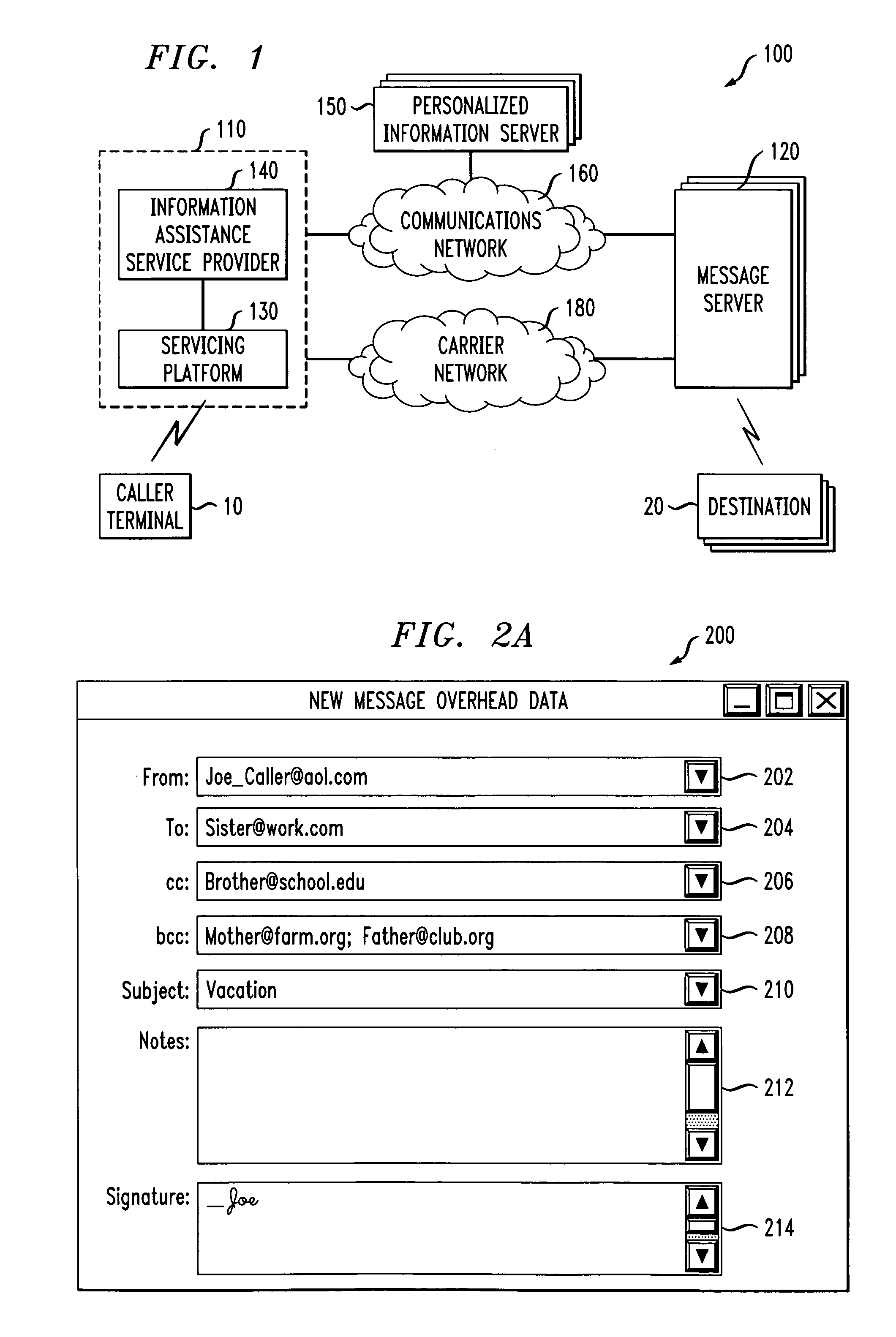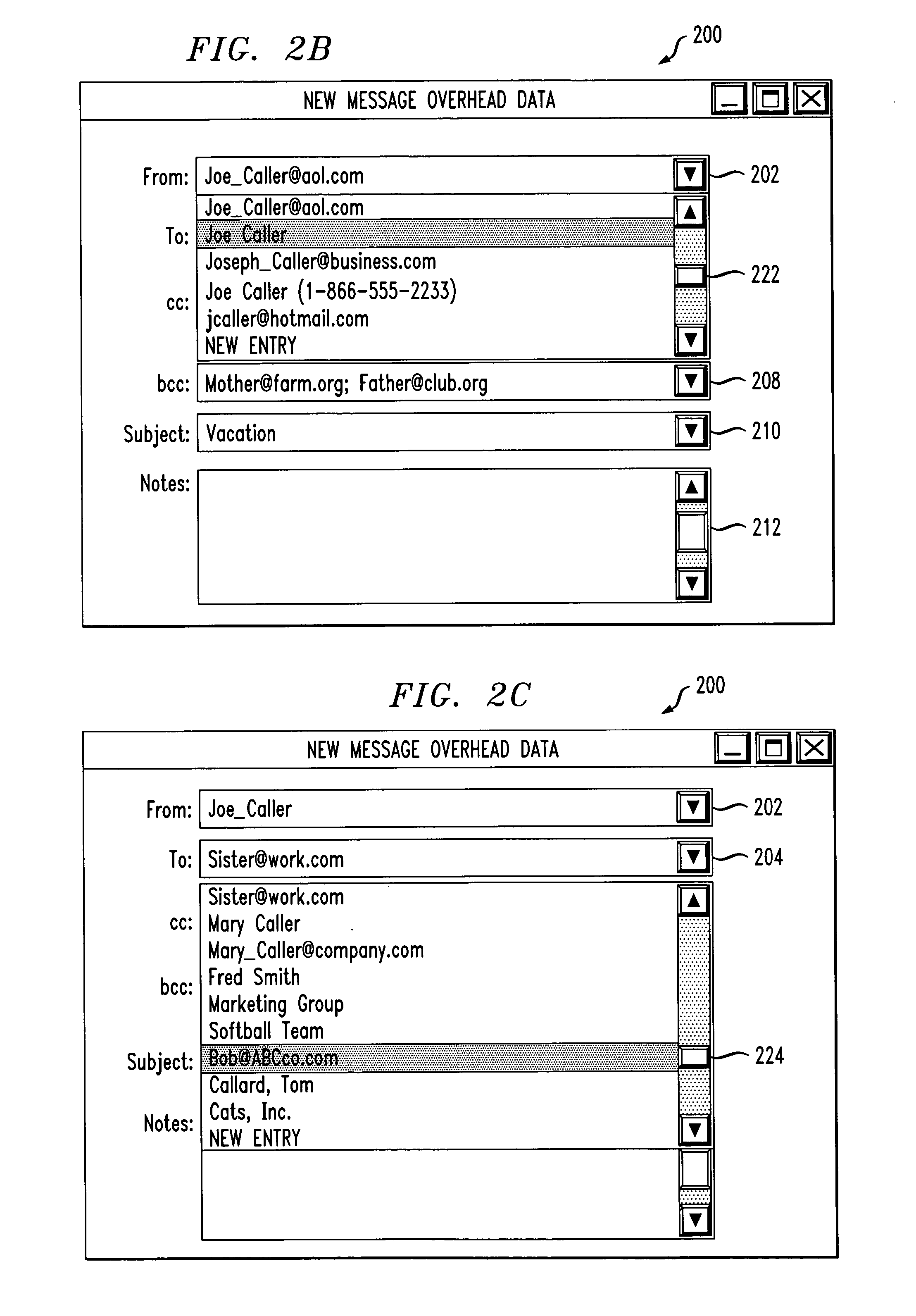While improvements have been made over the decades, such systems are still poorly suited for many users including, for example, subscribers of mobile telephone services (cellular, personal communications services (“PCS”) and other
wireless services).
While satisfactory for most customers, this arrangement is ill-suited for many mobile telephone customers.
For one, such customers are usually away from their general work environments (e.g., in a vehicle), and thus may not have ready access to a pencil and paper in order to make a note of the desired number.
(Even if such materials are available, the customer may not find it convenient to interrupt other activities, e.g., driving, in order to make a note.)
In addition, the process of initiating a second call—to the desired party—entails further manual operations (e.g., hanging up, waiting for another dial tone, and dialing) which may be a hindrance to the customer's other activities.
Information assistance services are also very limited with respect to the types of information,
connectivity and access that can be provided.
For example, as ubiquitous as mobile telephones have become, information assistance services still cannot provide mobile telephone
directory assistance, much less
directory assistance with respect to other frequently used technologies such as e-mail,
instant messaging and
text messaging.
Moreover, even with respect to traditional landline telephone numbers, commercial directory listing services offer only two classes of residential listings—“listed,” which means everyone can have access to the listing all the time, and “unlisted,” which means no one can ever have access to the listing.
There are a number of obstacles which confront prospective mobile
directory assistance service providers.
If a substantial carrier such as Verizon
Wireless refused to provide its listings, customers of the
wireless directory assistance service would find that an inordinately large number of their calls to the service would not yield the desired number and / or connection.
It is unlikely that such a service would stay in business very long.
Of course, each wireless carrier can provide a service with its own listings, but this would require customers to know in advance which
service provider the person they are trying to reach uses—also a commercially unrealistic requirement.
One reason some wireless service providers refuse to make their numbers available for directory listings is the widespread fear among wireless telephone subscribers that they will be subject to frequent unwelcome interruptions.
Unlike landline telephones, wireless telephones are carried everywhere (e.g., to business meetings, ball games, restaurants etc.), increasing the risk of inopportune interruptions by unwelcome callers.
Even in the absence of a wireless
directory assistance system, this fear has led some consumers to conclude that they actually need two different wireless telephones; one with a freely disseminated number for business, and another telephone for personal use with a number to be given out only to close friends.
A further obstacle to
consumer acceptance of a wireless directory assistance solution modeled on traditional landline directory assistance is presented by the fact that, unlike the caller-pays billing model employed by landline telephone services, wireless telephone subscribers are charged for connect time for both incoming and outgoing calls.
Information assistance services have also largely failed to accommodate non-telephone forms of communication, such as e-mail,
instant messaging,
text messaging, direct connect services (such as that currently offered by Nextel) etc.
While Internet services such as Yahoo.com and Switchboard.com do offer e-mail search services, it is our experience that such services rarely produce the desired e-mail listings.
The online records searched rarely contain the desired listings, and very few users register their e-mail addresses with such services, at least in part because they fear receiving even more unwanted e-mails (including spam, attachments containing viruses etc.) than they already do.
Another problem with the Trekmail-type messaging
system is the difficulty that the IVR has in recognizing the recipient's e-
mail address.
The IVR may also have trouble interpreting the words that the speakers say, either because the speakers do not speak clearly or because of the accent or speed with which the address is spoken.
In addition, because many parts of e-mail addresses are names and may actually be two or more words concatenated into one, it is difficult to match words using a standard dictionary.
 Login to View More
Login to View More  Login to View More
Login to View More 


